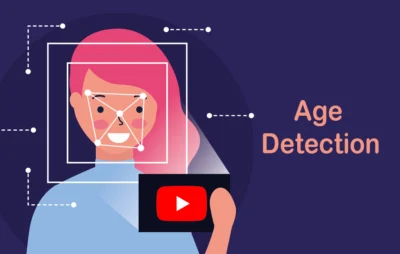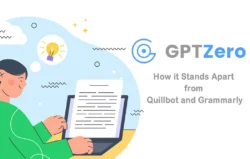
USA - Jul 30, 2025 (UTC) - In a significant step toward enhancing online safety for younger users, YouTube has announced plans to implement a new AI-powered age detection technology to identify and restrict accounts of minors in the United States. Set to begin on August 13, 2025, this initiative will leverage machine learning to analyze account activity and detect whether users are under 18, applying tailored protections to ensure a safer and more age-appropriate experience for teens and younger users. This move builds on YouTube’s ongoing efforts to protect young audiences while sparking discussions about privacy and the accuracy of AI-driven systems.
Background and Context
YouTube has long been a leader in creating safer online spaces for children and teens. In 2015, the platform launched YouTube Kids, a dedicated app offering a filtered, age-appropriate viewing experience. More recently, YouTube introduced supervised accounts for pre-teens and teens, allowing parents to manage their children’s viewing through the Google Family Link app. These initiatives reflect YouTube’s commitment to addressing concerns about the impact of social media on young users’ mental health and exposure to inappropriate content.
The upcoming AI-powered age detection technology, already implemented in other markets, is now expanding to the USA. This development aligns with growing regulatory and societal pressure to protect minors online, particularly in light of concerns about excessive screen time, targeted advertising, and access to sensitive content. By detecting minor accounts, YouTube aims to enhance user safety while navigating the balance between functionality and privacy.
How the Age Detection Technology Works
YouTube’s new system will use machine learning to analyze various signals to estimate a user’s age and detect whether they are likely under 18. These signals include:
- Types of videos searched: The keywords or topics users search for on the platform.
- Categories watched: The genres or categories of videos a user frequently views.
- Account longevity: How long the account has been active, which may indicate the user’s age.
By interpreting these signals, the AI estimates the user’s age and determines whether the account likely belongs to a minor. YouTube has emphasized that this technology will be used responsibly, with safeguards to protect user privacy. Unlike traditional age verification methods that rely on self-reported ages or ID checks, this system uses behavioral data to make informed estimates, reducing the need for sensitive personal information.
Protections for Identified Minor Accounts
Once an account is detected as belonging to a user under 18, YouTube will automatically apply a range of protections designed to enhance safety and promote healthy usage. These include:
| Protection | Description |
|---|---|
| Non-personalized advertising | Ads will not be tailored based on the user’s watch history, reducing targeted marketing. |
| Digital wellbeing tools | Features like “Take a break” notifications will encourage breaks during extended viewing sessions. |
| Content recommendation safeguards | Limits on repetitive recommendations of sensitive content, such as videos related to body image or other potentially harmful topics. |
| Privacy reminders | Automatic prompts to adjust privacy settings when uploading videos or leaving comments, helping users protect their personal information. |
| Restricted access to age-sensitive content | Blocks on videos marked as age-restricted to ensure minors cannot view inappropriate material. |
These measures aim to create a safer and more controlled environment for younger users, addressing concerns about exposure to harmful content and excessive screen time.
Age Verification for Misidentified Users
To address potential inaccuracies in AI age detection, YouTube will allow users flagged as minors to verify their age if they are 18 or older. Verification can be completed using:
- A credit card for a quick transaction-based check.
- A government-issued ID for a more formal verification process.
Only users who successfully verify their age as 18 or older will be able to access age-restricted content, ensuring that mature content remains inaccessible to younger audiences. This verification process aims to balance the need for accurate age detection with user convenience.
Rollout Timeline and Future Plans
The rollout of this AI-powered age detection technology will begin on August 13, 2025, initially targeting a small group of users in the USA. YouTube plans to monitor the implementation closely, gathering feedback and refining the system before expanding it to a broader audience. The company has also indicated potential plans to roll out this technology to other regions in the future, building on its success in other markets.
YouTube will work closely with creators and partners to ensure a smooth transition and to address any concerns about how the new system might affect content visibility or user engagement. The platform’s phased approach reflects a cautious strategy to balance innovation with reliability.
Reactions and Implications
YouTube’s initiative has been broadly welcomed as a proactive step toward protecting young users, particularly in the context of growing concerns about the mental health impacts of social media. By limiting exposure to sensitive content and reducing targeted advertising, YouTube aims to mitigate risks associated with excessive screen time and inappropriate material.
However, the use of AI to detect ages has sparked some debate. Privacy advocates have raised concerns about:
- Accuracy of AI estimates: There is a risk that the system may misidentify users, potentially restricting adults or failing to detect minors accurately.
- Data privacy: The collection and analysis of behavioral data to estimate age could raise questions about how user information is handled and protected.
YouTube has responded by emphasizing that the technology will be implemented responsibly, with strict privacy safeguards in place. The company has also committed to transparency about how the system works and how data is used.
Broader Context and YouTube’s Ongoing Efforts
This new policy builds on YouTube’s existing framework for protecting younger users. In addition to YouTube Kids and supervised accounts, the platform offers parental controls such as:
- Restricted Mode: An optional setting that filters out content deemed inappropriate.
- Channel blocking: Parents can block specific channels on supervised accounts or YouTube Kids profiles.
- Content curation: Tools to help parents select age-appropriate content for their children.
These tools, combined with the new AI-powered age detection, demonstrate YouTube’s multifaceted approach to creating a safer platform for children and teens. The use of behavioral data rather than facial recognition or ID checks reflects a less invasive approach, though it still raises privacy considerations that YouTube must address.
Conclusion
YouTube’s upcoming implementation of AI-powered age detection for minor accounts, set to begin on August 13, 2025, marks a significant advancement in online safety for young users in the USA. By leveraging machine learning to analyze account activity and detect whether users are under 18, YouTube aims to ensure that teens and younger audiences engage with age-appropriate content in a controlled environment. While the initiative has been praised for its proactive approach, it also raises important questions about privacy and AI accuracy that will need to be addressed as the rollout progresses. The shift to “age detection” in terminology highlights the system’s goal of identifying minor accounts, aligning with industry practices while maintaining clarity for users. As YouTube continues to refine and expand this technology, it remains a key player in shaping the future of safe online experiences for younger generations.





